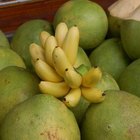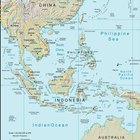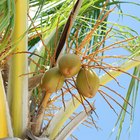Cellulite refers to the dimpling appearance of skin that is caused by an accumulation of fat within fibrous connective tissues. A number of conditions contribute to this, including gender, genetics, excess of adipose tissues and age. Most women have some degree of cellulite, however, Asian females are less affected by this issue than many other races.
Phytoestrogens
Phytoestrogens are plant compounds that limit the release of collagenase, an enzyme that breaks up collagen and causes tissue damage. Asians consume the highest level of phytoestrogens, which can be found in (but not limited to) soybeans, tofu, sesame seeds, ginseng, rice, mung beans and yams. According to researcher Peter Pugliese, author of "Physiology of the Skin," phytoestrogens control estrogen levels, which leads to cellulite reduction.
Lentinus Edodes
Lentinus Edodes, or shitake, are edible Japanese mushrooms popularly consumed in Asian countries. The extract derived from this mushroom generates protein expression in skin cells, which decreases subcutaneous fat levels in humans. Increased consumption of shitake may aid in the appearance of cellulite.
Lifestyle
A number of researchers, including Jeffrey Rosensweig and Betty Liu, authors of "Age Smart: Discovering the Fountain of Youth at Midlife and Beyond," attribute lifestyle factors to the decreased rate of Asian females exhibiting cellulite. This includes consuming a balanced diet and performing sufficient amounts of exercise, possibly leading to weight loss, which ultimately reduces cellulite.
Related Articles

Nutrition Information on Blueberries

Foods From Rainforest Plants

Skin Benefits of Eating Coconut Oil

The Best Anti-Cellulite Supplements

A List of Foods That Contain Choline

Wild Yam for Hair Growth

Can Oranges Cause Acne?

What Foods Provide Calcium D-Glucarate?

Can Age Spots Be Reversed?

How to Reduce Acne Inflammation

Food Sources of Phosphatidylcholine

Southeast Asian Diet & Nutrition

How Many Calories Are in an 8-Ounce ...

A Low-Cholesterol Diet Plan Menu

Which Nuts Are Alkaline Forming?

Which Vegetables Produce the Most ...

Are There Foods That Heal Age Spots?

What Vitamins Help the Liver?

What Are the Benefits of Extrapone ...

The Average Weight of a Boiled Egg
References
Writer Bio
Jacqueline Sand has been a professional writer since 2007. Her articles have appeared in "Sing Tao Daily" and "Nha Magazine." She is a freelance scriptwriter and her work has been used in talk shows, educational DVDs for New Concept Mandarin and student films. Sand is pursuing a Bachelor's of Arts in media studies at the University of California, Berkeley.